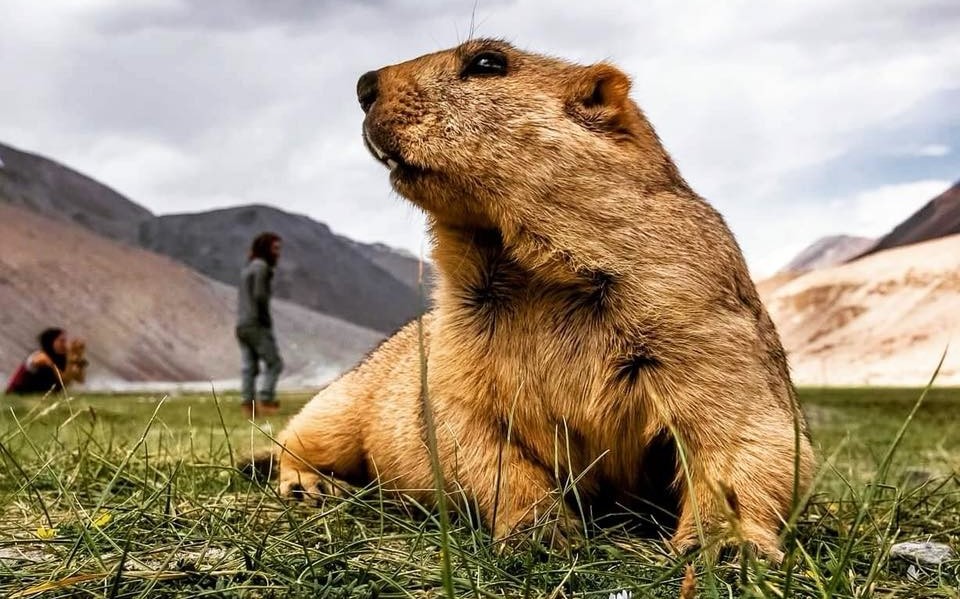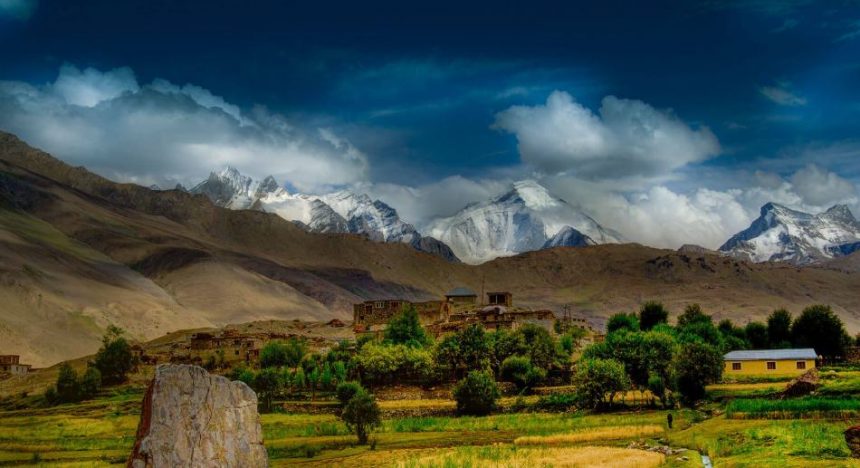Precious Animal of Ladakh
The Himalayan marmot is found in the cold Himalayan regions.The most unique sight one can come across on the Leh Ladakh expedition going toward Pangong Tso, is Marmots foraging or basking in the sun?s warmth & playing in meadows. It is one of the highest elevation-dwelling mammals in the world and is well adapted to life in dry alpine meadows that receive very little rainfall. Being a social species, the Himalayan marmot lives in colonies of varying sizes from four to forty in deep burrows that can keep them warm even in sub-zero temperatures. They hibernate during the winter months when the terrain is covered in deep snow and sunlight is scanty. These mammals belonging to the squirrel family are swift to retreat into their burrows at the slightest hint of human approach.
There are 14 species of marmots in the world, only two species are found in India in the Leh-Ladakh stretch. But in recent years their numbers are dwindling due to adverse environmental impact and human interference. Even global climatic changes add to unpredictable weather patterns, receding glaciers and reduction in grasslands, hampering the marmot's peaceful life. They are constantly being disturbed by a large so-called Tourist who just wanted pictures at any cost. These so called "TOURIST" They feed the creatures, play pranks, leave litter behind or even pose for photographs. Marmots are actually large squirrels and they eat grass, berries, roots and that sort of thing. In season lot of tourist feed them biscuits, chips and other food products which they are not used to. Once the season is over and tourist disappear they stop eating grass too (as per local once they taste salt they refuse to eat grass) and die. So it's a humble request to all the people who visit these places kindly do not feed them and do not disturb them. On our expedition, we give strict guidelines to Participants before we cross their occupied lands.
The difference between a Tourist and a Traveller:
"Tourist" make a mess everywhere just for his/her pleasure (because they think that they pay for it so they got every right to turn it upside down). Whereas the "traveller" lives the moment, feel the nature, appreciate it and feel thankful to witness such sight and leave without disturbing it...... So be a traveller always !!
There are a lot of banners and posters enroute which suggest not to feed marmots as when the season ends nobody is there to feed them and once they taste other food they lose interest in grass n all and lot of them die of hunger. So next time plz don't feed marmots. Let them live their simple life
The traditional people of Ladakh leave them alone but some nomads kill marmots for easy meat and use the fur for winter wear. Although there are no specific plans regarding the conservation of marmots. The impact of more tourist traffic over the years appears to have scared off Ladakh's wildlife to its remote interiors. Marmots and many bird species are seen no more. That increased tourism will tarnish the tranquil terrain of Ladakh and disturb the unique and endemic wildlife in the region is a forgone conclusion.
Distribution
Himalayan marmots are found in South Asia and in China. In South Asia, they occur throughout the Himalayas of India, Nepal, and Pakistan. In China, these animals have been recorded in Xinjiang, Qinghai, Gansu, Xizang, western Sichuan, and Yunnan provinces. Himalayan marmots inhabit alpine grasslands and deserts, as well as alpine meadows.
Weight and other characteristics
Marmot Animal is large and heavy that its weight ranges from 3 to 7 kg contingent upon the species. The Length of the marmots is very bulky and the body weights up to 30 to 60 cm. The hairs are dense and marginally rough and yellowish-brown, brown, reddish-brown, black, or a combination of grey and white. Phia is capable of staying in the cold environments and they have small ears that are covered with fur, short legs and strong nails for digging. The ancient marmot animal hides up to 9 months and the fats are reserved for 20 per cent of its total body weight. The neighbouring living families of marmot Ladakh are ground squirrels and prairie dogs.
Ecological niche
Himalayan marmots are important prey for endangered Snow leopards. As burrowing animals, these marmots may help to increase soil aeration throughout their range. Once abandoned, their burrows most likely provide important habitat for other species of a fossorial or semi-fossorial type.
Reproduction
Females become sexually mature at the age of two years. After one month of gestation, they give birth to litters of two to 11 young.
Population number
The IUCN Red List and other sources do not provide the Himalayan marmot total population size, but this animal is common and widespread throughout its known range. Currently, this species is classified as Least Concern (LC) on the IUCN Red List.
Predators
On the Tibetan plateau, the predators of marmot species are Snow leopard, Foxes, coyotes, bobcats, eagles, hawks, owls, and humans.
Life Span
The life span of the Himalaya Marmot is 6 years or 10 in custody.






